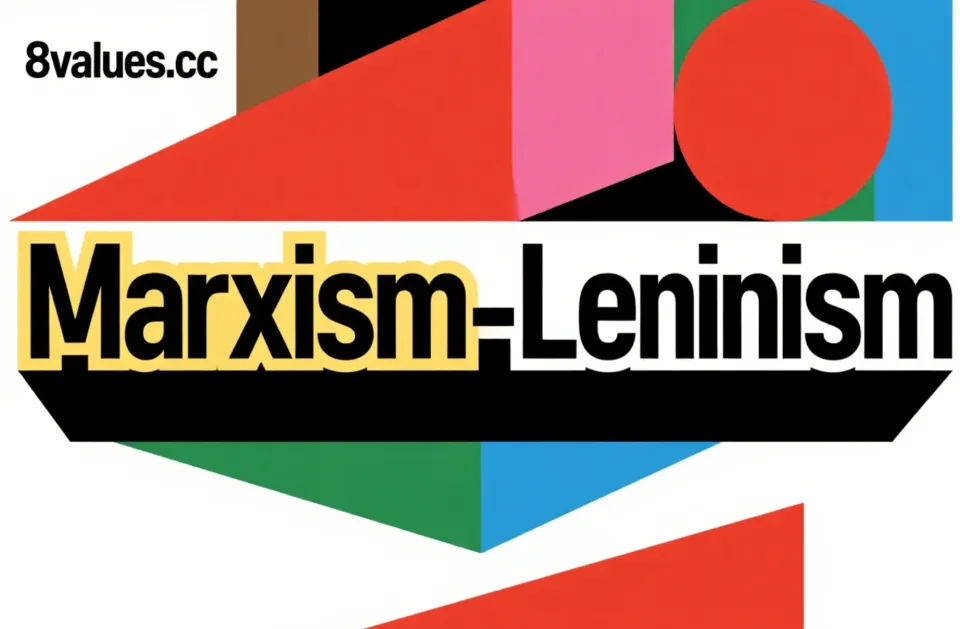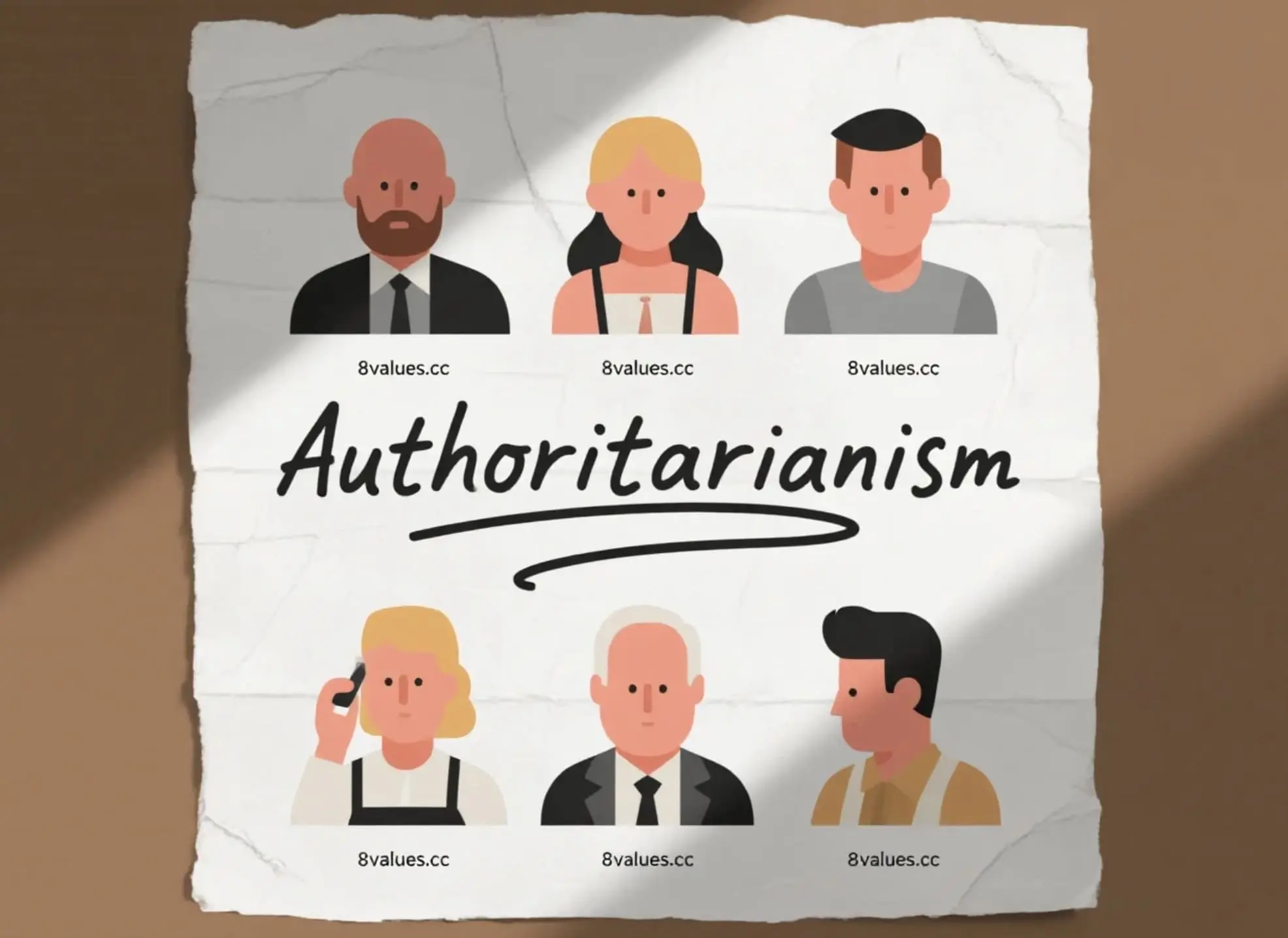Marxism-Leninism: An in-depth interpretation of a core political ideology
This article introduces in detail the ideological and theoretical system, formation process, core content, and application and development of Marxism-Leninism, to help readers better understand this guiding ideology that has a profound impact on the global political landscape. To understand various ideologies, please try the 8values political values tendency test.
Marxism-Leninism (Russian: марксизм-ленинизм, English: Marxism-Leninism) refers to Marxism developed by Lenin . As a scientific theoretical system and an important school of political thought, Marxism-Leninism is adopted by many different political groups around the world. The vast majority of the Communist Party still respects Marxism-Leninism as its basic guiding ideology, although many parties will supplement and develop it according to new needs of the political environment.
The founders of Marxism-Leninism's ideological theory were Karl Marx, Friedrich Engels and Vladimir Ilyich Lenin .
From Marxism to Marxism-Leninism
Marxism is the cornerstone of the entire theoretical system. It is a theory founded by Karl Marx and Friedrich Engels. It is a complete scientific theoretical system, mainly including the scientific world outlook, the theory of social and historical development, the theory of proletarian revolution, and the theory of socialist and communist construction. Marxism is the theoretical basis and guiding ideology of working-class political parties.
As a theoretical system, Marxism has the following characteristics: it continues to develop in combination with the practice of workers' movements and revolutionary struggles in various countries; it continues to develop in the struggle with various erroneous thoughts; it continues to develop in the process of creative research on new problems and new situations raised by the development of the times.
After the deaths of Marx and Engels, their successors continued to develop Marxism. Lenin combined the basic theory of Marxism with the specific practice of the Russian Revolution and developed this theory creatively. Lenin's development of Marxism brought it into a new stage, namely the Leninist stage.
Although Lenin himself had never used the word "Leninism", he had never classified his views into the word "Marxism-Leninism". However, his ideas developed from the ideas of classical Marxism, which the Bolshevik regarded as Lenin's progress to Marxism. After Lenin's death, his ideological system and his contribution to Marxism were quickly named "Marxism-Leninism" or "Leninism" and quickly became a common name for this ideological system by communism and communists around the world.
Theoretical composition and core content of Marxism-Leninism
Marxism-Leninism is an ideological system formed on the basis of Marxism and Leninism.
The core component of Marxism
Marxism is a complete scientific system, consisting of three main components: Marxist philosophy, political economy and scientific socialism . These three components are not separated from each other, but form an interconnected organic whole. Marxism is an ideological weapon for the proletariat to understand and transform the world. Its main characteristics are the combination of scientificity and revolutionary nature, and the unity of theory and practice .
The contribution and development of Leninism
Leninism is the Marxism of the era of imperialism and proletarian revolution. Lenin made many contributions to the development of Marxism under the new historical conditions, forming a rich new ideas and new views. The core content that constitutes Leninism mainly includes the following six aspects:
- Imperialist theory: an in-depth analysis of the development of capitalism to the imperialist stage.
- Theory of Proletarian Revolution: It explains the necessity and path of the proletariat's revolution.
- Theory of ethnic colonial issues: It involves the status and role of oppressed nations and colonies in the world revolution.
- Theory of proletarian dictatorship: The theory of Marx and Engels on the dictatorship of the proletariat was developed.
- Theory of building socialism: Summary of the practical experience of Soviet Russia and put forward the basic principles and guiding ideology of socialist construction.
- Theory of the new type of proletarian party: formulated the doctrine on establishing a vanguard party that leads the proletariat .
The essence of the theoretical characteristics of Marxism-Leninism is consistent with the theoretical characteristics of Marxism and Leninism. For example, it contains a guide to the necessity of overthrowing capitalism through revolution and taking violent forms .
Practice, Application and Analysis of Marxism-Leninism
Flexibility as a guiding theory
Marxism-Leninism particularly emphasized that these theories were proposed based on the social reality at that time, so each country must flexibly apply them in light of the actual situation of its own country and region . Marxism-Leninism is only a programmatic guiding theory and by no means a dogma . It also inevitably needs to develop, supplement and continue to improve in a timely manner according to factors such as time and environmental changes.
Major applications and developments in history
Stalin gradually consolidated his control of power in the Soviet Union after Lenin's death. During his reign of the Soviet Union, Marxism-Leninism was used as the official ideological system of the Soviet Union . The term Stalinism strictly refers to a type of government and political party, not the system of thought itself.
Under the framework of Marxism-Leninism, different successors have different understandings and supplements of their direction.
For example, some historical and political science circles have debates over whether Stalin's behavior is in line with the principles of Marxism-Leninism. In particular, the Trotskyists believed that Stalin distorted the real Marxism and Leninism, and they used "Bolshevik Leninism" to describe their Marxist school of opposition to Stalinism and Maoism.
After the Sino-Soviet alliance broke down, the Soviet Union and the People's Republic of China (PRC) both claimed that they were the true successors of Marxism-Leninism. In China, the Chinese Communists represented by Mao Zedong combined the basic theory of Marxism with Chinese history and social practice to create Mao Zedong Thought. Since then, the term "Marxism-Leninism, Mao Zedong Thought" has gradually been used to describe the ideological basis of the official and sympathetic parties of the People's Republic of China. Since then, some Maoists even proposed the term "Marxism-Leninism, Mao Zedongism" , believing that Mao Zedongism is a more advanced stage of Marxism-Leninism.
In addition, in 1977, North Korean officials replaced Marxism-Leninism with the subjective idea (Juche) , which no longer played a core role. However, the North Korean government is sometimes described as a "Marxist-Leninist" due to its political and economic structure, although the more common term is "Stalinist".
Contemporary Applications and Differences
The vast majority of the Communists still respect Marxism-Leninism as their basic ideology. However, there are also some Communists, especially those who are united with Eurocommunism, who intentionally distance themselves from “Marxism-Leninism” and avoid the term in official documents. Some of them began to call themselves "Marxists, Leninists" rather than "Marxists and Leninists" to avoid the possible historical implications of the latter.
Many political parties will call "Marxism-Leninism" on the party name to show their differences from other leftist parties in their country (the latter is usually regarded as revisionists by the former). The most common parties that are named "Marxism-Leninism" are those that are based on the anti-revisionist tradition, such as Maoist parties and Hoxhaist parties.
The difference between Marxism-Leninism and other Marxist thoughts
There are many complex terms when describing many ideas derived from Marxism. Non-academic people (such as many media) often use "Marxism-Leninism" as a universal synonym, which refers to any kind of Marxist school, resulting in a more confusing use.
It should be noted that there is a trend of thought called Western Marxism . This is a kind of thought that opposes Leninism in modern Western countries but claims to be Marxism. Western Marxism attempts to combine Marxism with some schools of modern Western philosophy, and put forward different opinions from Leninism in its analysis of modern capitalist society, its outlook on socialism, and its revolutionary strategies and strategies.
If you are interested in a broader political ideological classification and theoretical stance, you can use the 8values political values tendency test to evaluate your tendency in economic, diplomatic, government and freedom, and further explore the positioning of theories such as Marxism-Leninism in a contemporary context.






